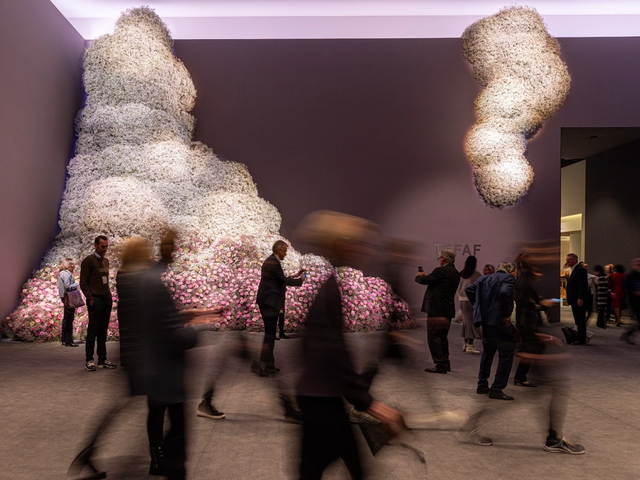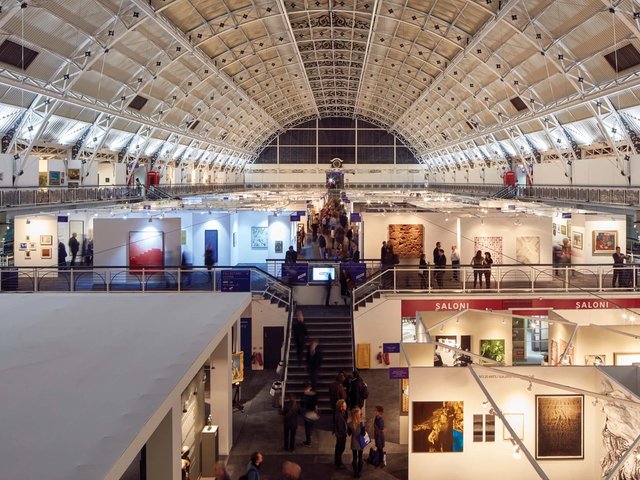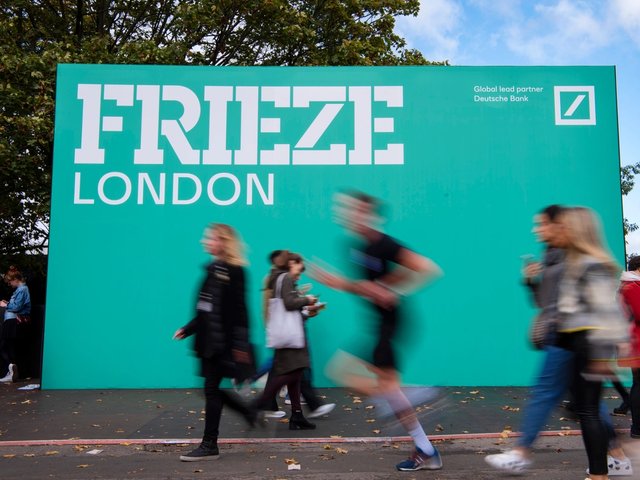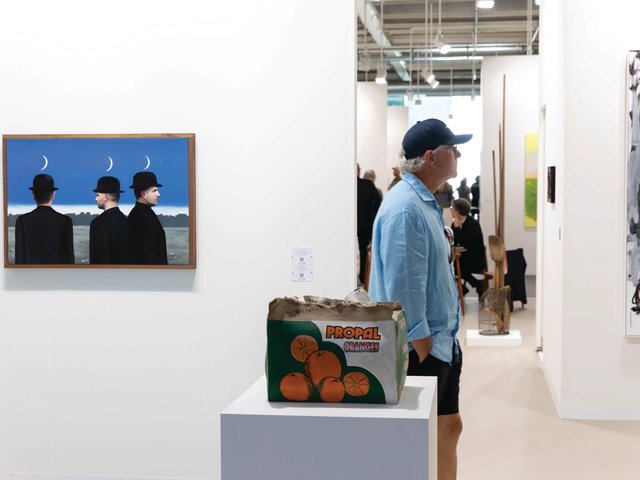It is a question routinely posed among the trade: how insulated is the art market from wider political and economic realities? Certainly, the brightness of the opening days of New York’s art fair week belies the prevailing atmosphere of turmoil and fear in the US since the start of President Donald Trump’s second term.
This is, in part, thanks to the unprecedented density of events this week, with at least 12 fairs opening in the space of four days, before the major spring auctions begin. This crowded calendar appears to have benefited preview-day attendance. “The decision to combine Frieze and Tefaf in the same week was a smart choice,” says the adviser Daniel Malarkey. “It has created a palpable energy in town that reinforces that there is more art to see here than anywhere else in the world.” Dealers seem to agree: “It’s busier than last year,” says Ema O’Donovan of the London-based gallery Xxijra Hii, which is exhibiting at the New Art Dealers Alliance’s fair. “I had to strain my voice over crowds in the opening hours, which is always a good sign.”
The dealer Niru Ratnam, speaking during the preview of Independent, notes the uptick in attendance and mood. “The opening is much livelier this year. It feels like there is pent-up energy, and that people don’t seem to care nearly as much about Trump. The tanking bond markets seem to have even scared him into co-operating with the UK,” Ratnam said hours after news broke of a trade deal between the UK and US. The adviser Liz Parks adds: “New York is livelier than expected. Perhaps there has been some adjustment to the recent swings and we are learning to work around and through the chaos. It was even floated to me that the worst might be in the rear-view mirror.”
Market mood swings
To be sure, the market is yet to return to its peak two years ago; the cumulative estimates for next week’s auctions are down around $250m from the equivalent sales in 2024. “While the stock market recovery has provided a bit of a breather, there is still massive uncertainty amid the 90-day tariff pause,” says Philip Hoffman, the founder of the Fine Art Group advisory firm. “The average collector is still being put off by high interest rates, although we are seeing demand for excellent quality and from bargain hunters—those collectors hoping to knock 20% to 30% off a price quoted two years ago. Anything average, however, is still not selling, and until interest rates drop by 2%, I don’t see that changing.”
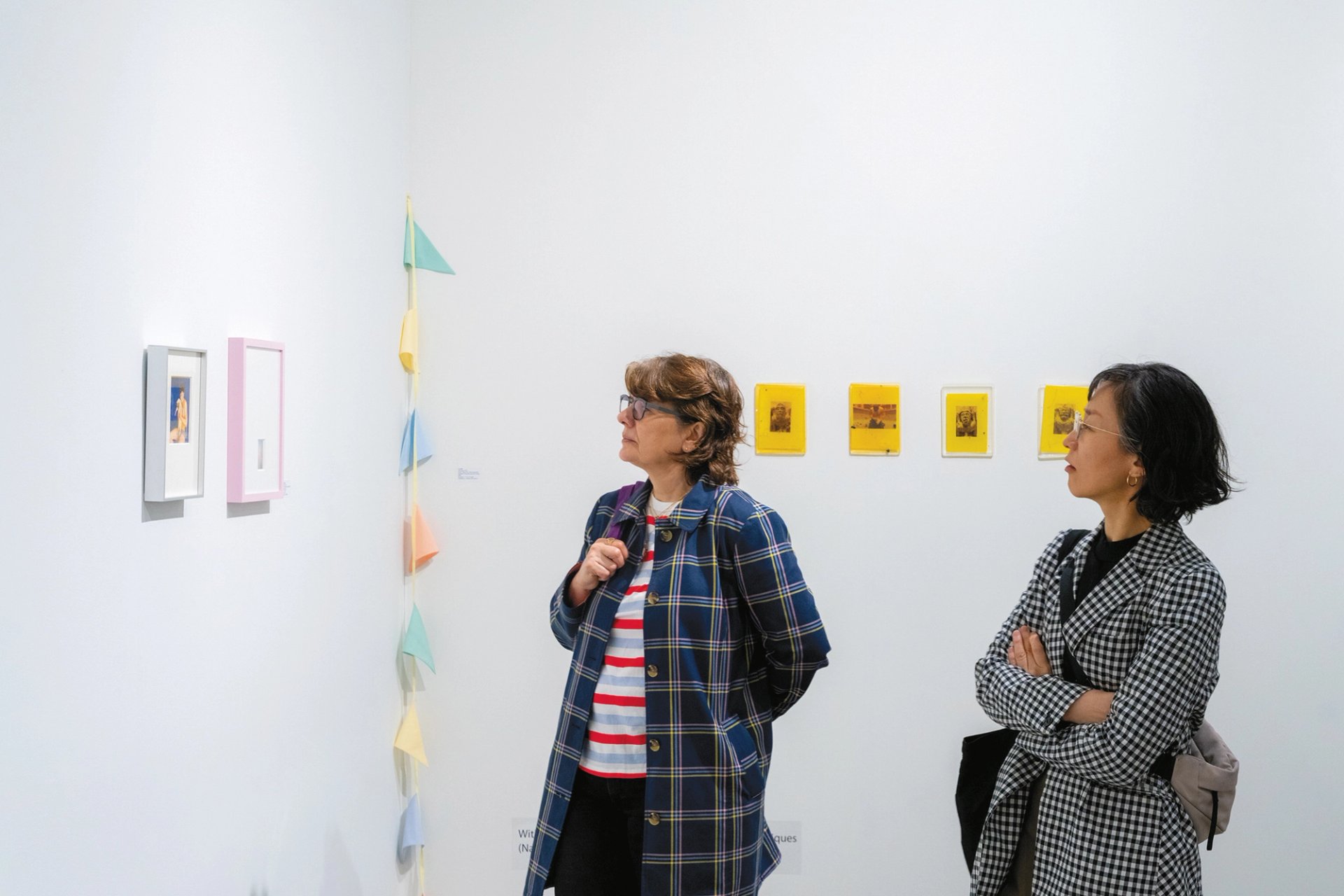
The French gallery Sultana sold six works on Frieze’s opening day Steven Molina Contreras
Looking beyond the art trade, experts presently question whether Trump’s unpredictable policies will put a stop to a sustained period of ‘American exceptionalism’, the belief that the US’s economy is distinctly stronger than others, which was only reinforced by its swift post-pandemic bounceback compared with China and Europe. As Edward Harrison writes in Bloomberg, now “something sinister has taken form, with investors not only doubting where growth will come from in the US, but doubting the actual rule of law underpinning the dollar as the world’s reserve currency and US government debt as the safest financial asset in the world”.
The stability, or “rule of law”, that has long assured the US’s dominance over equity markets also helps maintain its position at the apex of the art market: the US commands 43% of the global share, according to the latest Art Market Report published by Art Basel and UBS, with New York accounting for an estimated 90% of the US market, according to a 2020 report by the economist Clare McAndrew. This is not simply because of its concentration of art businesses and wealthy collectors, but because of the “stability of its fiscal systems, rule of law and commercial codes, which offer a high level of protection to both domestic and international buyers and sellers”, per the 2020 report—factors that have been fundamentally undermined since Trump returned to power. As the adviser Alex Glauber says, “all this flipflopping does not make us a reliable trading partner”.
There is an eagerness from collectors to bring some sense of normality to the present momentAaron Cezar, Delfina Foundation
“There is more caution than before, and you are seeing signs of other parts of the trade leaving New York,” Hoffman says. “Jewellery from China is now being sold in Geneva, while Chinese art, now a nightmare to import into the US, might well shift back to London, which could re-emerge as a free-trade zone between the US and Europe. The whole thing is up in the air.”
While the situation in the US remains unsettled, no other market is, as yet, poised to take over. “Paris is growing in importance, but I don’t know any other epicentre that could usurp New York. After all, London and Hong Kong are facing their own issues,” Glauber says. Case in point: Ratnam says his participation in US fairs is necessitated by “sales in London having fallen off a cliff”.
Global realignment?
Across New York City this week, there were signs of a dented internationalism making the once straightforward practice of trading art in the US increasingly fraught.
“Frankly, I was nervous to come here, with the political situation being what it is,” says Guillaume Sultana, the owner of the Paris and Arles-based gallery Sultana, at his Frieze New York stand. “In that sense I had few expectations, but I am very pleased with how the opening has gone.” Sultana notes that much of his stand, from which he sold six works at the opening, relates to identity issues that have gained a new urgency in the US. “These artists are not shying away from discussing issues that are under threat.” One artist on the stand, Jesse Darling, is trans and used his 2024 Turner Prize victory speech to wave a Palestinian flag and advocate for an end to the Israel-Hamas war.
Logistical issues abound, too. One gallerist participating in Frieze New York, who wishes to remain anonymous, reveals that their stand of textile works, which they shipped the day before the tariffs hit in April, was held up in customs from Latin America for a month and was released only on 6 May—just one day before the fair preview. “The political situation right now is very tough; there is no doubt about that.” They point out that a group of collectors from Indonesia, a Muslim-majority country, cancelled their trip to New York due to “fears about the situation at the border”.
Shipping snafus also hit Linseed gallery from Shanghai, which is offering paintings by Travis MacDonald at its Independent stand. Although the artist is Berlin-based and the works were shipped from Germany, a delay at customs meant the shipment only arrived one day before the fair opened, with the presentation’s largest work still to be hung an hour into the preview. “Things are stricter now, and under greater scrutiny even in Europe, since tariffs hit; getting our stand here was difficult,” says a director at the gallery. “Now let’s see how this week goes.”
As the art market chugs along this week, some in the trade expressed concern about it feeling disconnected from the dire position now facing US institutions—especially as federal arts funding is slashed amid layoffs and cuts at the National Endowment for the Arts, the National Endowment for the Humanities and the Institute of Museum and Library Services.
“Many colleagues of mine are fearful of the journey coming over here,” says Aaron Cezar, the director of the Delfina Foundation in London. “Right now, the market feels optimistic; there is an eagerness from collectors to bring some sense of normality to the present moment, to make sense of it through art. I hope this optimism will translate into the non-profit sector, which is now facing a huge funding gap. The two sides are indelibly linked: strong institutions lead to a strong market. What is under threat right now is the pipeline that feeds the industry. It’s not just cuts to museums, but education, too, which will impact future generations.”



